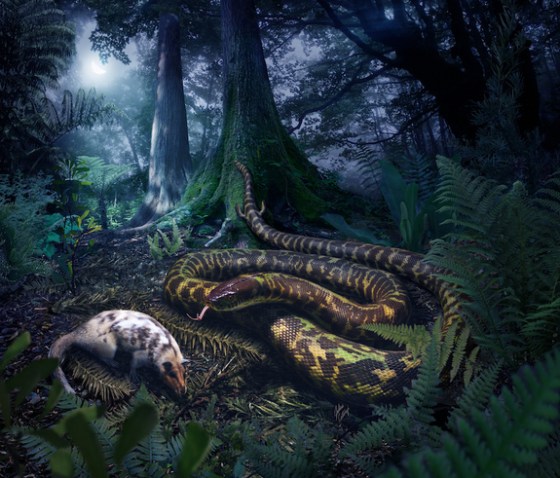Millions of years ago, the common ancestor of all living snakes — a long creature with tiny hind limbs as well as ankles and toes — could be found slithering over the damp soil of forests in search of soft-bodied prey, a new study finds.
In the first comprehensive reconstruction of ancestral snakes, the researchers analyzed the fossils, DNA and anatomy of 73 species of snake and lizard.
Their findings suggest that the most recent common ancestor of snakes was likely nocturnal, evolved on land and lived in the warm, damp forests of the Southern Hemisphere about 128 million years ago, they said. [See Amazing Images of Snakes from Around the World]

The finding sheds light on the evolutionary history of snakes. Even though more than 3,400 snake species currently live on Earth in all sorts of habitats, little is known about where and when they developed, and how their original ancestor looked and behaved.
In addition to using genetic and anatomic data, the researchers "were able to take available data and backtrack through time to reconstruct what was the most likely behavior exhibited by the fossil snakes, given that the living snakes are behaving in this way," said Allison Hsiang, the study's lead researcher and a postdoctoral researcher of geology and geophysics at Yale University.
Hsiang and colleagues created an enormous snake family tree by identifying each species' similarities and differences. Their findings focused on the ancestor of all snakes and snakelike animals, as well as the legendary great granddaddy of only snakes.
Both ancestors likely hunted at night and ate "soft-bodied vertebrate and invertebrate prey" that was about the size of their heads, the researchers wrote in the study. Although their prey were relatively large compared to prey eaten by lizards at the time, it does not appear that these ancient creatures could constrict and manipulate prey larger than themselves, as the modern boa constrictor can, the researchers said. And unlike constrictors, these snake ancestors likely used needlelike teeth to snag prey before swallowing them whole.
The ancestors also likely lived on land in "warm, well-watered and well-vegetated environments," they added.
The study was published online May 19 in the journal BMC Evolutionary Biology.
This is a condeensed version of a report from Live Science. Read the full report. Follow Laura Geggel on Twitter @LauraGeggel. Follow Live Science @livescience, Facebook & Google+.
